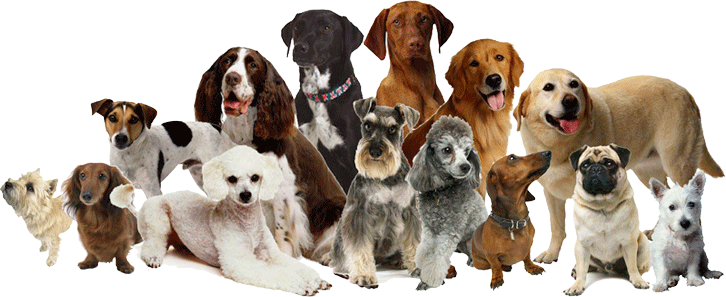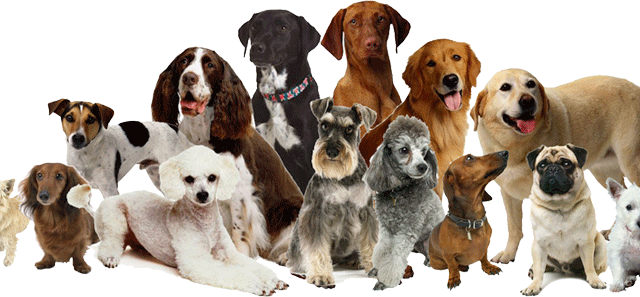

Breeds Aplenty?
There are over 300 dog breeds in the world.
What?
Back in the day, breed groupings existed to identify the basic types of dogs that existed, according to their functions. Working dogs guarded, pulled sleds, did general farm work, or served with the police or military. Terriers killed vermin. Toys were companion pets. Sporting dogs hunted and retrieved. Hounds used their great noses to find game, or people. Herding dogs managed large flocks of farm animals.
So, there are six basic groups, or “ breed types,” as well as a depository for “outcast” breeds known as the “Non Sporting Group”- dogs that don’t quite fit into any of the other groups. If we only had a dozen breeds in each group, we’d only have 42 dog breeds total. It would contain a nice variety, and the jobs we designed them to do would pretty much get done.
But beginning a few hundred years ago, breeders began to create focused breeds designed for very specific jobs. A Border Terrier, for instance, though an instinctive vermin killer like its other terrier kin, was bred to have longer legs, allowing it to better keep up with horses on a fox hunt. Australian Cattle Dogs were designed to withstand the harsh conditions in the Australian outback, and to deal with near-feral cattle that lesser herding dogs would run from. Bloodhounds became the best trackers of human beings. Irish Wolfhounds could take on wolves and live to tell the story. Rhodesian Ridgebacks fought and treed lions, for heaven’s sake! Special needs or wants caused a slow but sure expansion of the breeds.
With the onset of industrialization, and with a shift of populations from farms to cities, the need for working dogs lessened dramatically. But, ever adaptable, dogs rewrote their resumes, and made a lateral move into the field of human relations. They became professional companions.
Ironically, it was this desire to have a dog just for the fun of it that led to an even bigger expansion of breeds. Breeders created oddly lovable yet physically challenged dogs like the Pug or the Bulldog, apparently just for the heck of it. Toy versions of big dogs, like the Miniature Pinscher or the Miniature Schnauzer, were created, for novelty. Instead of one giant white herd guarding breed (like the Great Pyrenees), there are now a half dozen highly similar ones. Yorkshire or Silky Terrier? English Toy or Cavalier King Charles Spaniel? Japanese Spitz or American Eskimo toy? The plethora of comparable breeds can be confusing, to say the least.
Today, the creation of a new breed almost never happens for utilitarian purposes. Instead, it is usually for aesthetic reasons, or because some entrepreneur thinks that the mixing of two existing breeds can somehow create a better “breed.” Though this “hybridization” does end up creating a dog with traits from both pure bred dogs, it does not always cancel out undesirable traits, the way their designer breeders often claim. For instance, the Puggle- a mix of Pug and Beagle- is supposed to create a dog that barks less than a Beagle, and has fewer sinus or structural problems found in the Pug. But I often see Puggles that bark like Beagles, and snore like Pugs. Go figure.
Hybrids (aka mongrels) do suffer less from inbred diseases than do purebreds. 60% of all Golden Retrievers, for instance, will die from some form of cancer, due mainly because of the lack of gene variation. In effect, the desire to create a breed of dog that looks exactly the same from one location to another ensures a level of inbreeding or linebreeding that shrinks the gene pool, and unavoidably increases the odds of hereditary disease. And so, it would make sense then that an increase in pure bred dogs would naturally lead to more disease, and genetic abnormalities.
Of course, we would have no mongrels at all without purebred dogs crossbreeding with other purebreds. It is an important concept to understand; nearly all mutts are a product of two purebred dogs mating. Few multi-generation mongrel populations exist in the West, short of on Indian reservations or in chronically poor rural areas. And so, we are beholding to purebred dogs, it seems.
It is fun to think that a Greyhound and a St. Bernard are, genetically, the same species. It’s also fun to see a Border Collie herd, a Norfolk Terrier rat, or a Bloodhound find a lost child. These unique, wide-ranging breed characteristics and personalities give us dog lovers near unlimited variety, and the ability to experience a huge assortment of canine capabilities. But maybe, just maybe, might it be time to put the brakes on the creation of new breeds, for no other reason than to custom-make an animal to our personal specifications, and aesthetic desires?
Join the newsletter and never miss out on dog content again!
"*" indicates required fields
By clicking the arrow, you agree to our web Terms of Use and Privacy & Cookie Policy. Easy unsubscribe links are provided in every email.